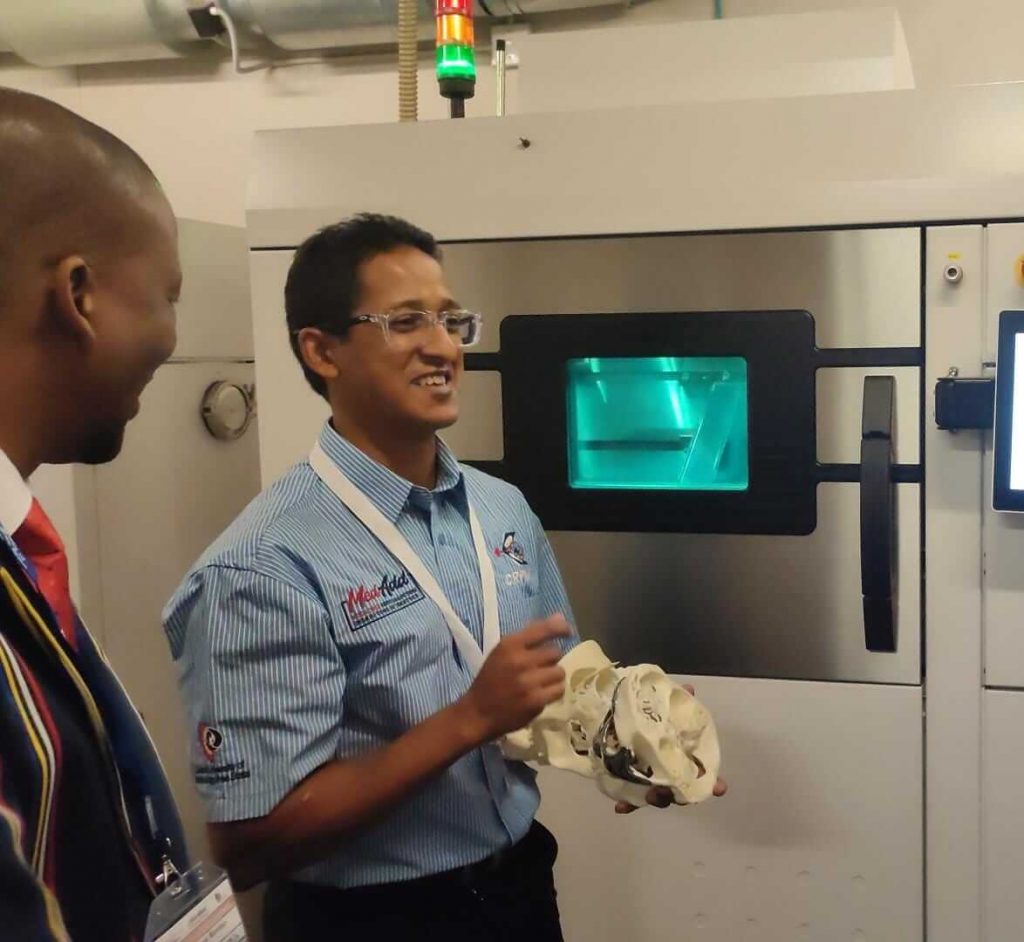South Africa will no longer have to rely on costly imported medical devices for people living with disabilities, following the launch of a R97 million additive manufacturing project in Bloemfontein on Friday, 8 April.
The Department of Science and Innovation (DSI) and Central University of Technology (CUT) launched the Medical Device Additive Manufacturing Demonstrator Project (MedAdd) to bridge the gap in the availability of customised medical devices in the country.
Additive manufacturing, better known as 3D printing, is one of the technologies used in advanced manufacturing and is considered a cornerstone of the fourth industrial revolution.

Until recently, the availability of equipment for medical device manufacturing in South Africa was limited. The Centre for Rapid Prototyping and Manufacturing (CRPM) at CUT has been doing ground-breaking work over the years in the design, development and manufacturing of medical devices. This has positioned the university as a leading local institution in the field of customised medical implant production.
MedAdd functions under the CRPM’s ISO 13485 certification, which acts as a safety net for small companies seeking to develop and industrialise new products, de-risking their innovative development before fully-fledged commercialisation. Since the project’s inception in 2019, more than 2 000 different products have been developed.
The DSI funded the project through its entity, the Technology Innovation Agency (TIA), which provides technical support to small and medium enterprises affiliated to a technology station at CUT for the project.
Dr Rebecca Maserumule, Acting Deputy Director-General for Technology Innovation at the DSI, said the advent of the global COVID-19 pandemic had highlighted the importance of African countries proactively investing in medical research and health innovation.
One of the areas that the DSI identified for the purpose of enhancing the impact of science in society was health innovation.
“Our overall objective in this space is to help grow the health economy by providing locally developed and relevant diagnostics and medical devices with a view to boosting their manufacturing,” said Dr Maserumule.
“More specifically, we seek to enhance our existing capacity to manufacture active pharmaceutical ingredients, vaccines, biopharmaceuticals, diagnostics and medical devices to address the disease burden while ensuring the security and sustainable supply of essential therapeutics and prophylactics.”
CUT Council Chairperson Matthew Rantso added that since 2015, more than 1 000 patients had been assisted through the support of state and private hospitals, the expertise of the CRPM, and funding from the DSI, TIA and other strategic partners.
This has given people like 35-year-old Luan Adams a new lease on life. After sinus cancer disfigured his face, Adams’ speech and breathing were affected. Now, with a facial prosthetic implant made of silicone at the CRPM, both his breathing and his speech have improved. The CRPM 3D-printed the titanium frame implant that is used to hold the prosthetic in place. “I am more than grateful to be alive,” said Adams.
The MedAdd project has been successful in bridging the innovation gap for medical device companies by leveraging the advantages that additive manufacturing brings to the manufacturing industry.
Rantso said the project had brought the CRPM and industry together in planning and investing resources in a collaborative manner, which is a big plus for the university. From a product development point of view, he added, this was an opportunity for CUT, business and industry, through government, to create African solutions for South African challenges.
“We look at the success of MedAdd as just the beginning towards the next stage of technological innovations that will be followed by many other landmark projects like this one.”
Photo caption: Dr Gerrie Booysen, CRPM Director; Prof. Alfred Ngowi, CUT Acting Vice-Chancellor; Dr Rebecca Maserumule, Acting Deputy Director-General: Technology Innovation (DSI); Luan Adams, facial prosthesis beneficiary; Princess Moshoana, 3D-printed implant beneficiary; Dr Tate Makgoe, Free State Education MEC; Dr Vuyisile Phehane, Executive: Bio-Economy (TIA); and Matthew Rantso, CUT Council Chairperson.
Article sourced from: The Department of Science and Innovation (DSI)







